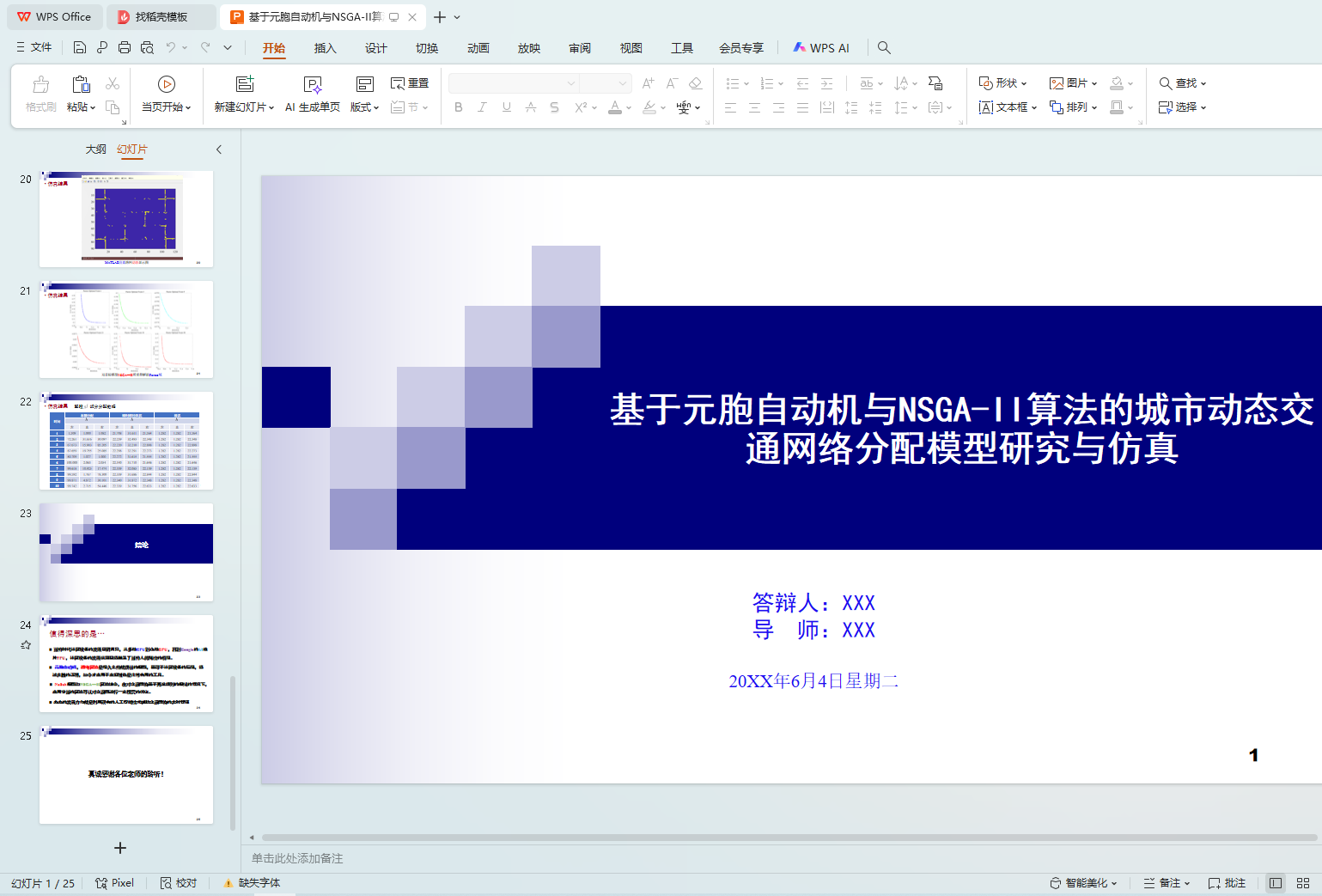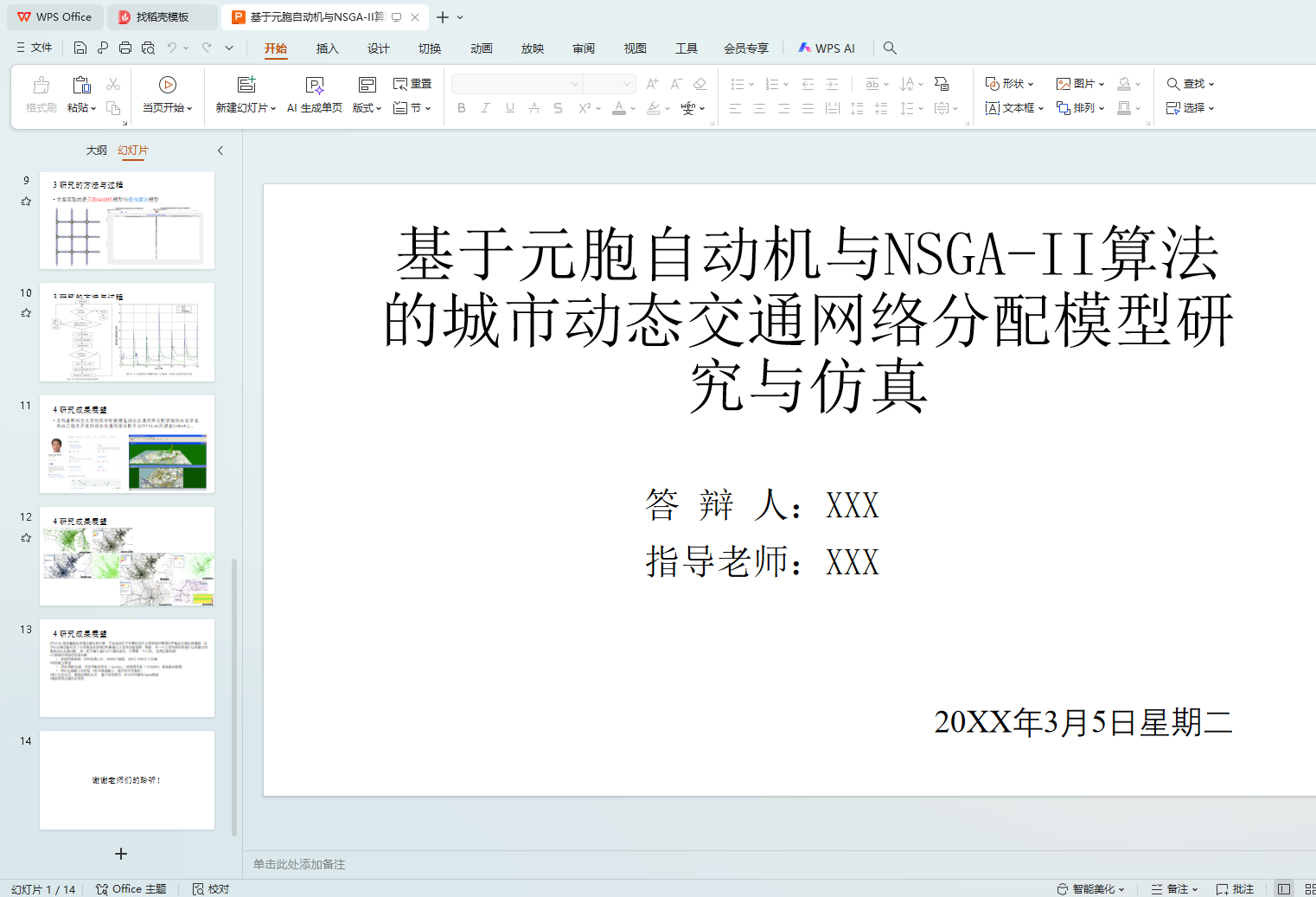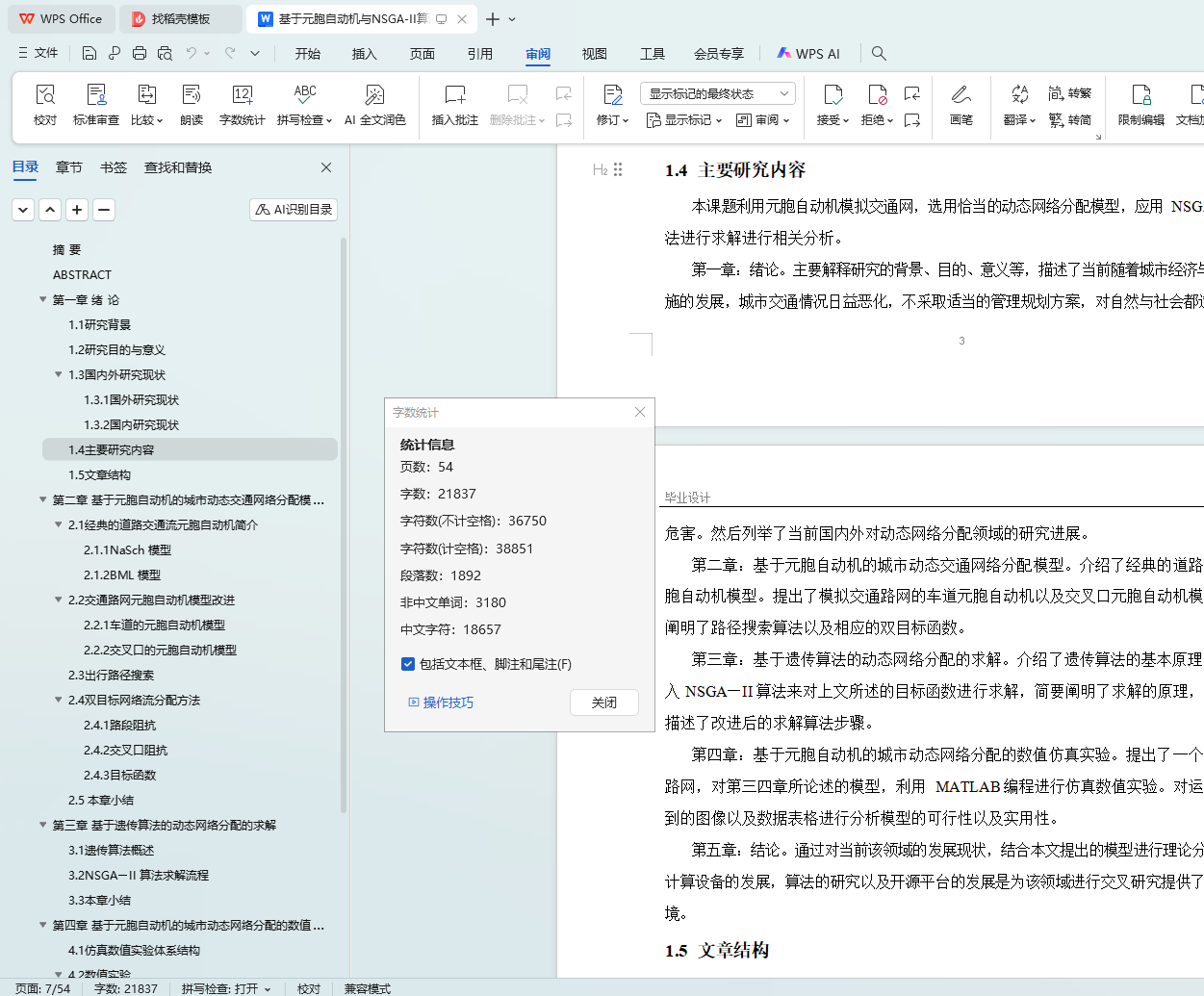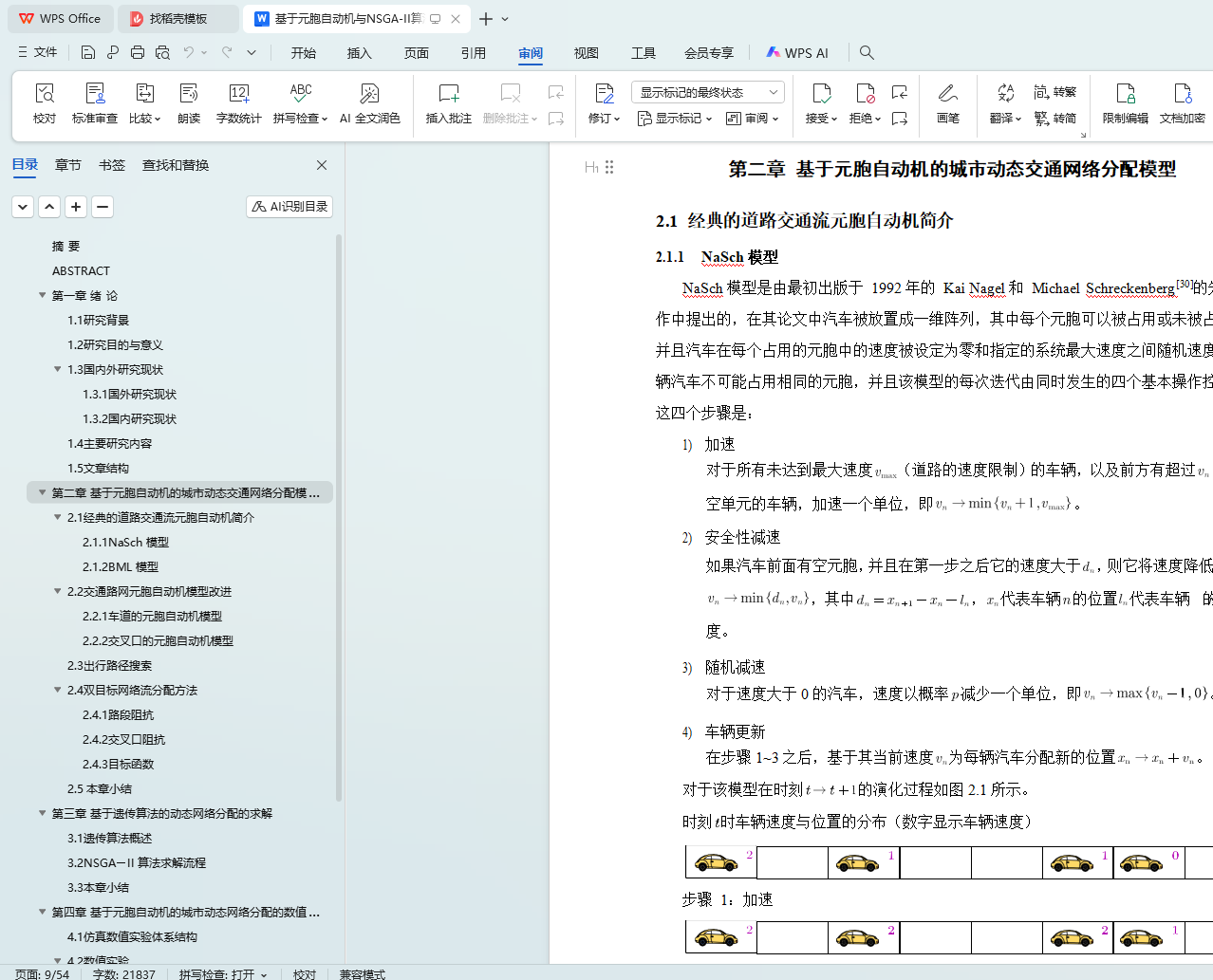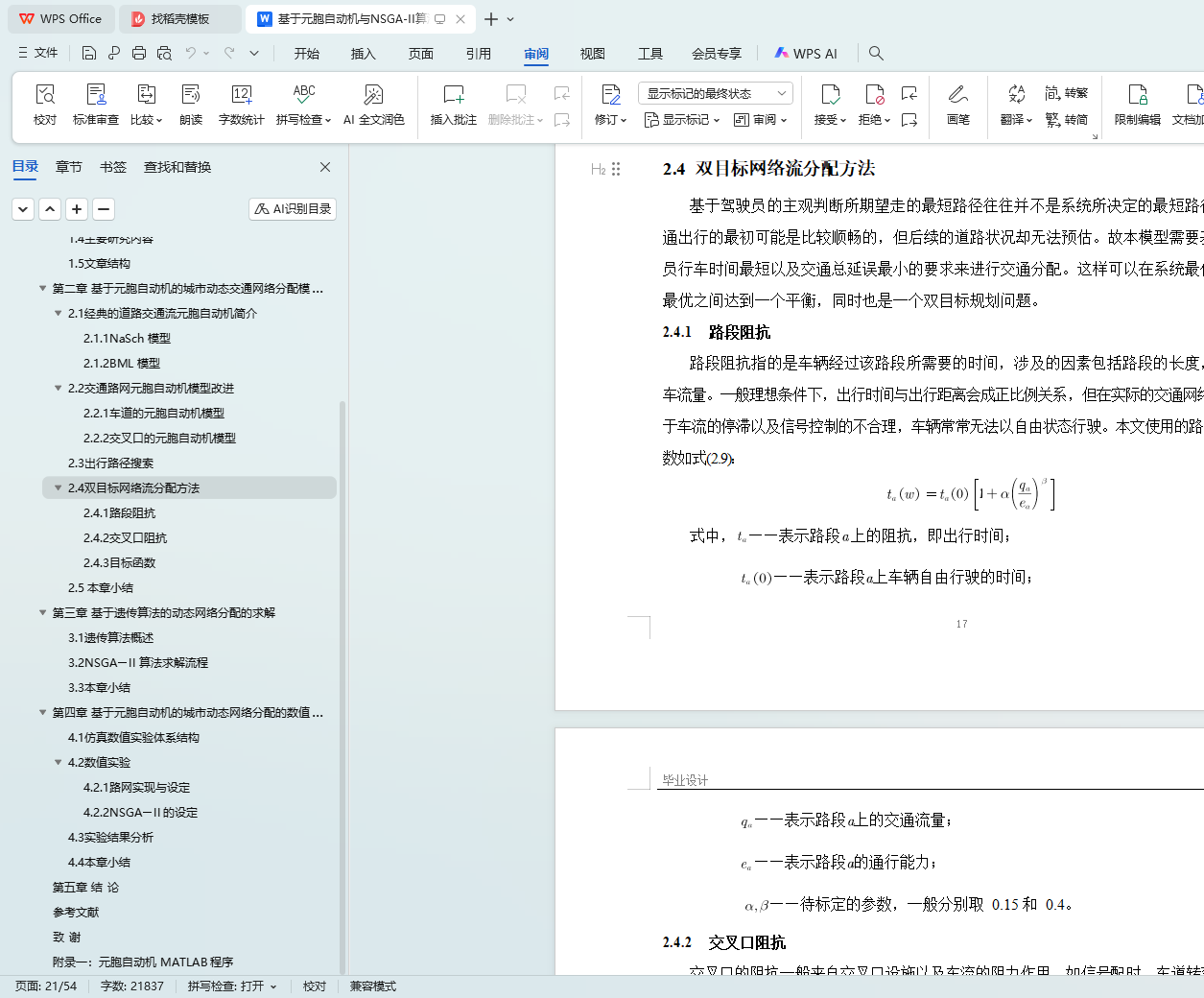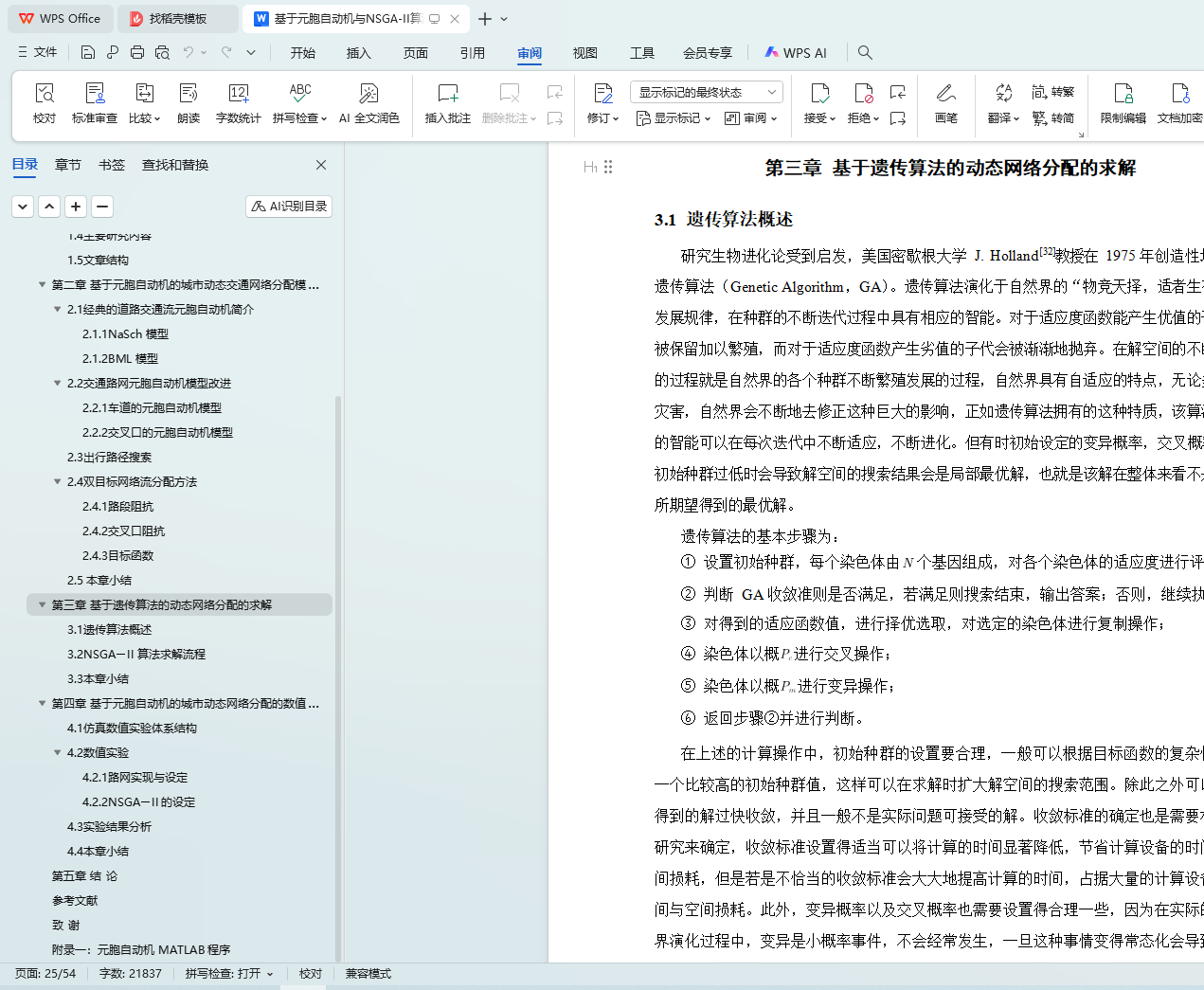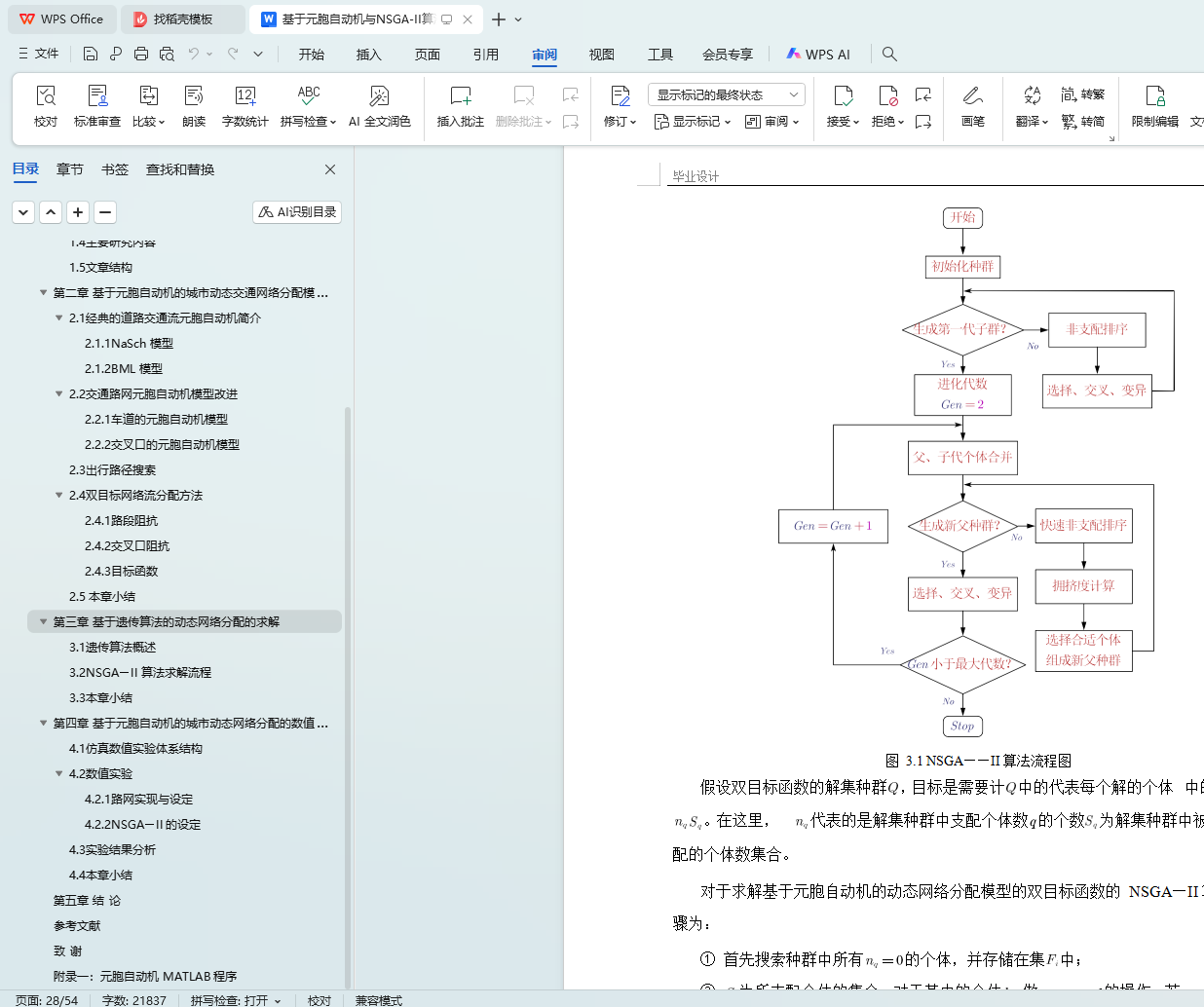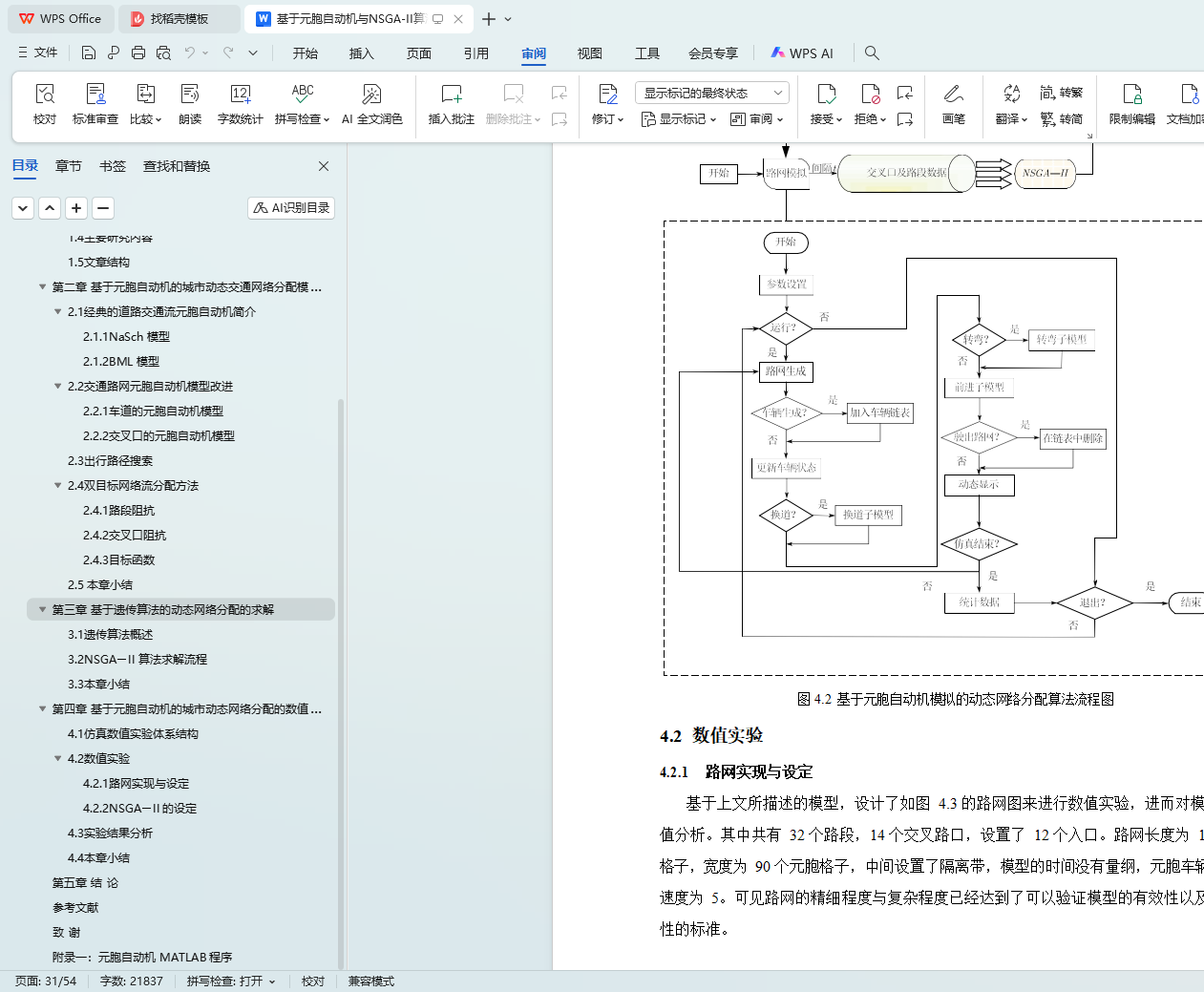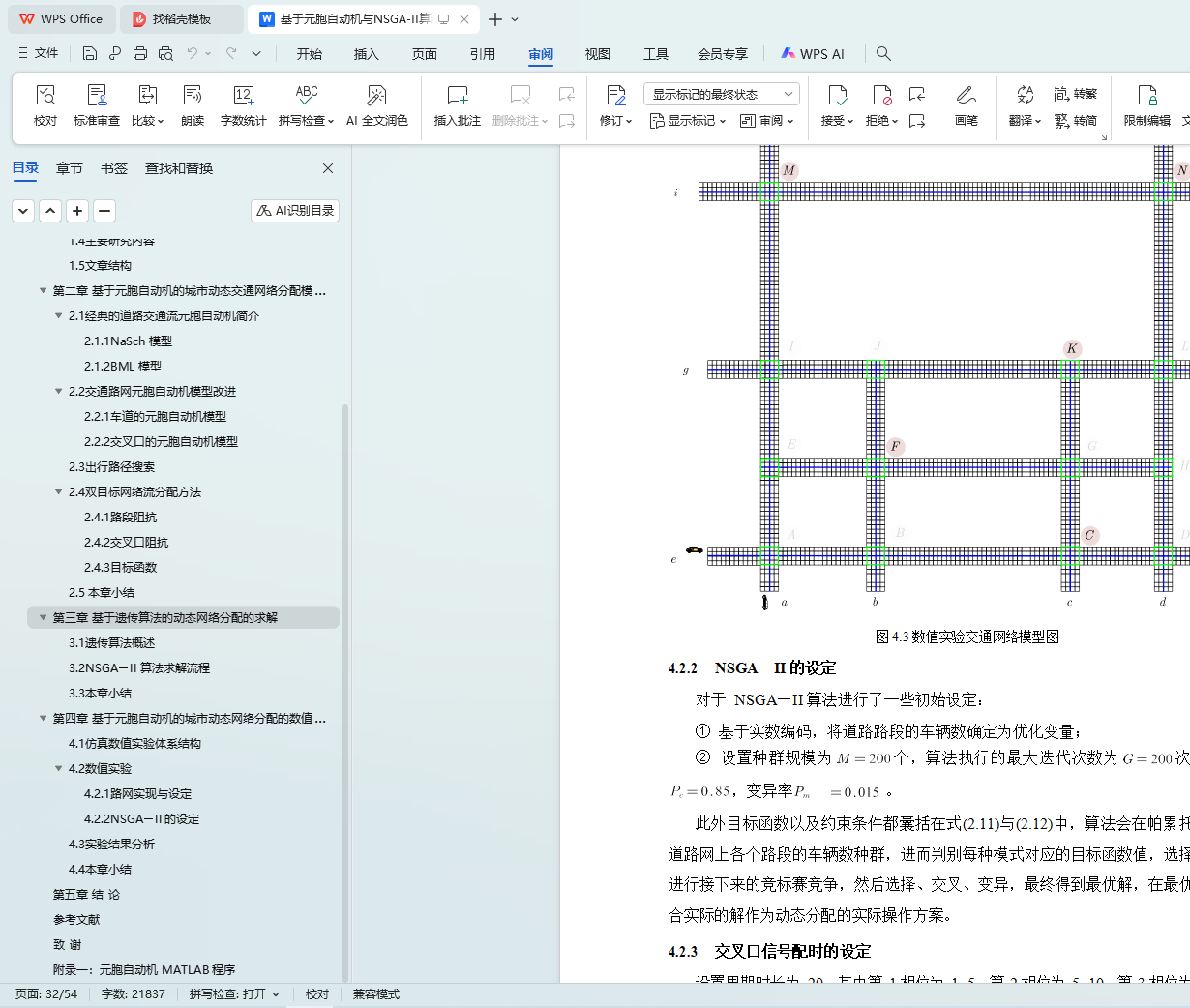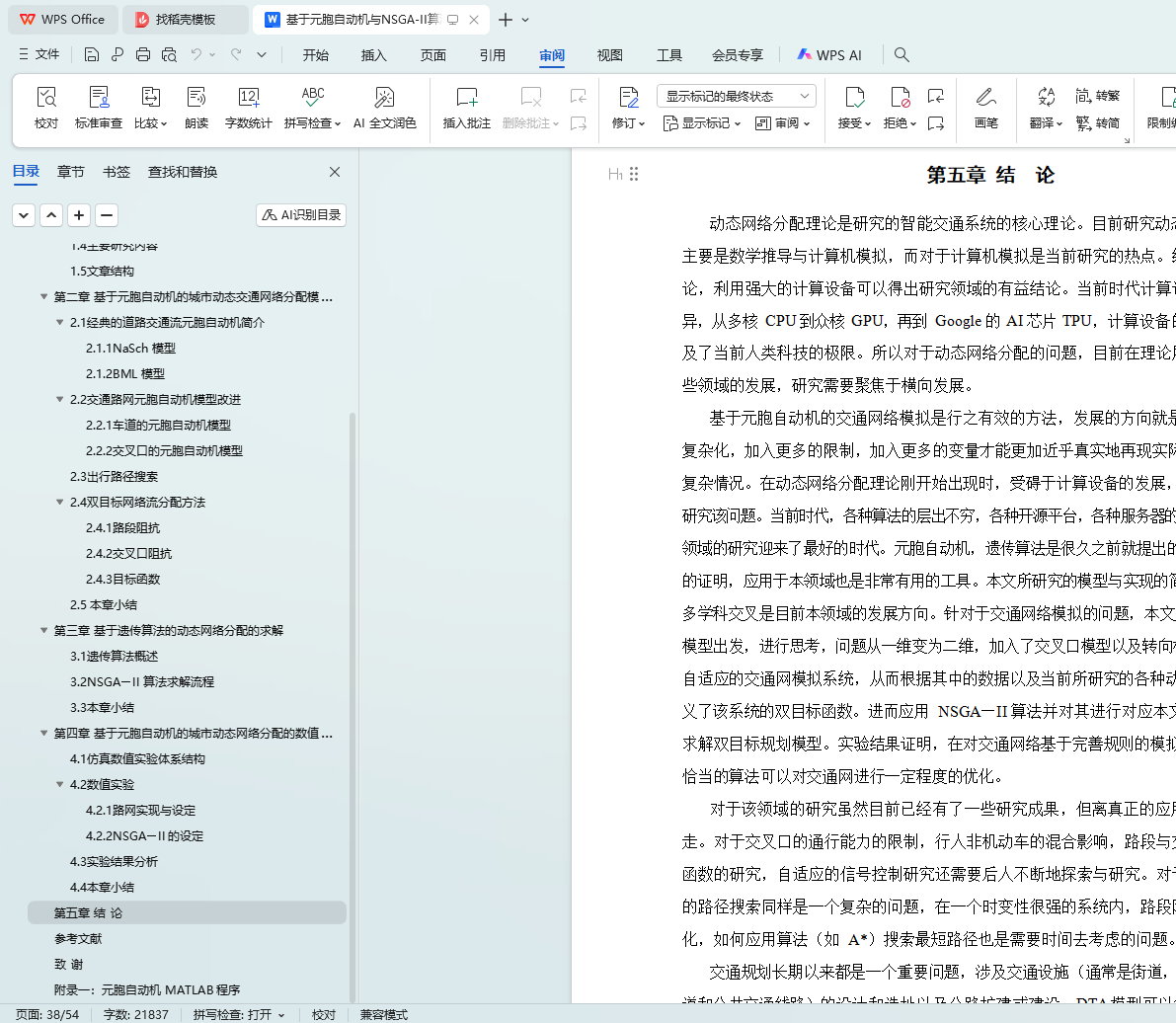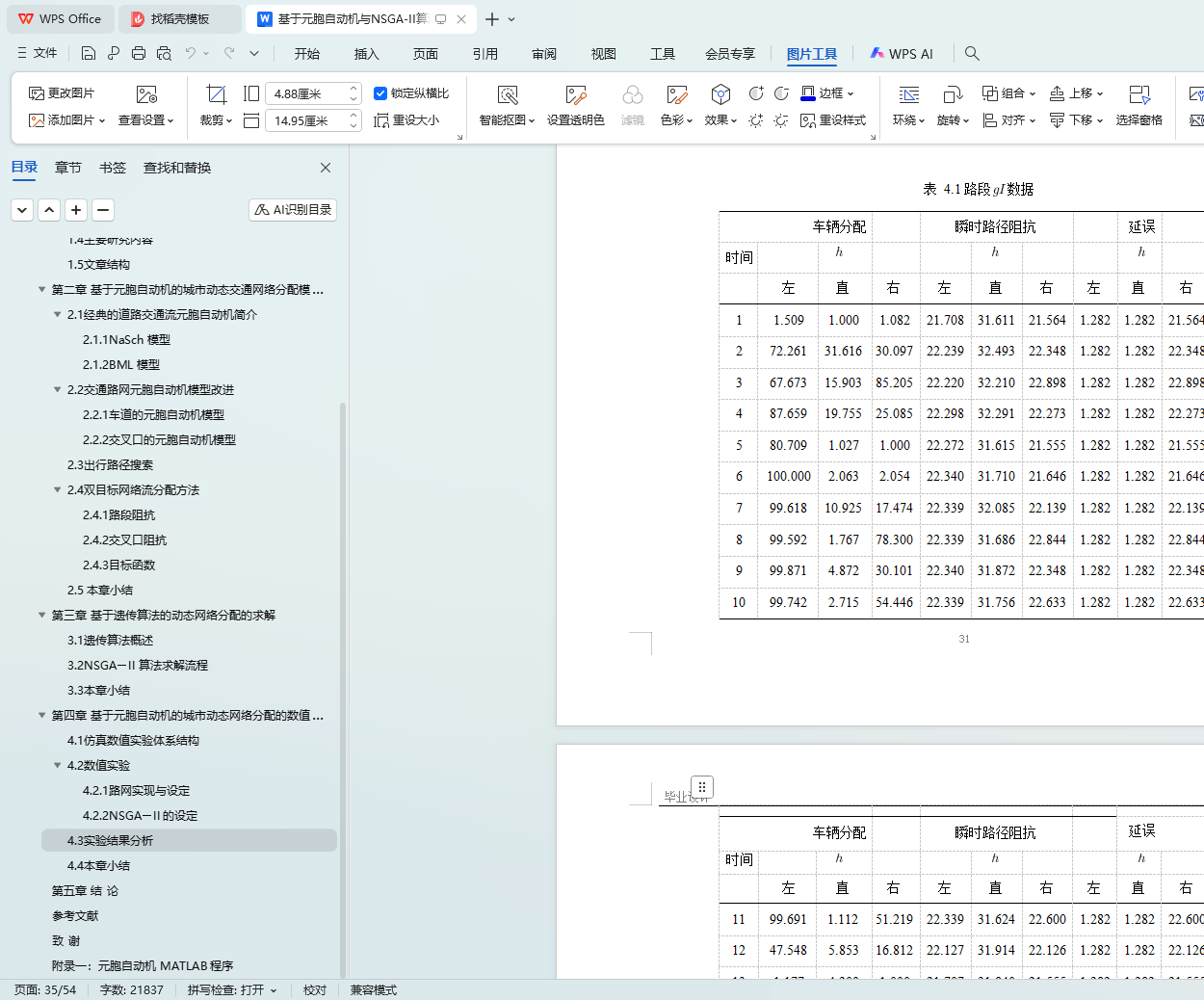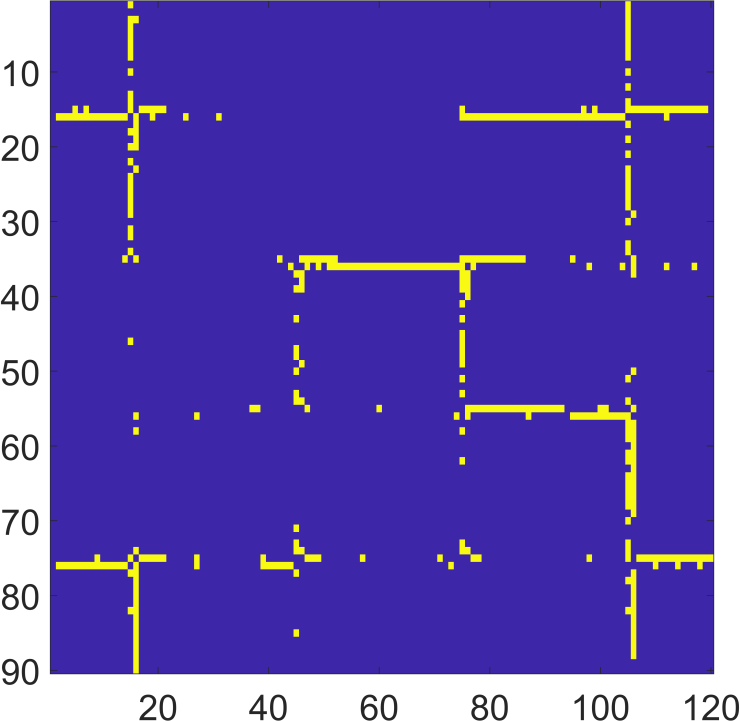摘 要
智能交通系统的研究主要是为了建立现代化交通运输系统和交通信息管理系统,而其中的核心领域之一就是动态网络分配模型和算法。
基于经典的 NaSch 模型,本文对模拟交通路网的元胞自动机模型进行了深入研究,提出了两类新模型,即车道元胞自动机模型和交叉口元胞自动机模型。本文详细阐明了路径搜索原则,当问题从一维变为二维时,还加入了交叉口模型以及转向模型,得到了一套自适应的交通网模拟系统,从而根据其中的数据以及当前所研究的各种动态网络分配模型定义了该系统的双目标函数,并采用 NSGA—II 算法对该双目标规划模型进行了求解。此外, 本文还对一个二维路网进行了数值模拟,并对模拟结果进行了详细分析。
研究结果表明本文提出的模型可以较好的用于动态网络分配。数值实验结果表明,在对交通网络基于完善规则的模拟的情况下,应用恰当的算法可以对交通网进行一定程度的优化。
关键词:动态网络分配;元胞自动机;NaSch 模型;遗传算法;双目标规划
ABSTRACT
The research of intelligent transportation system is mainly to establish a modern transportation system and traffic information management system, and one of the core areas is dynamic network allocation model and algorithm.
Based on the classical NaSch model, this paper makes an in-depth study on the cellular automaton model of the traffic network. Two new models are proposed, namely the lane cellular automaton model and the intersection cellular automaton model. In this paper, the path search principle is clarified in detail. When the problem changes from one-dimensional to two- dimensional, the intersection model and the steering model are added, and an adaptive traffic network simulation system is obtained, based on the data and the current research. The various dynamic network allocation models define the dual objective function of the system, and the double objective programming model is solved by NSGA-II algorithm. In addition, the paper also numerically simulates a two-dimensional road network and analyzes the simulation results in detail. The research results show that the proposed model can be used for dynamic network allocation.
The numerical experiments show that the traffic network can be optimized to a certain extent by applying appropriate algorithms in the case of the traffic network based on the simulation of perfect rules.
Keywords: Dynamic Network Allocation; Cellular Automaton; NaSch; Genetic Algorithm;
Bi-objective Planning
附录一:元胞自动机 MATLAB 代码
附录二:NSGA—II 算法 MATLAB 代码(目标函数部分)
